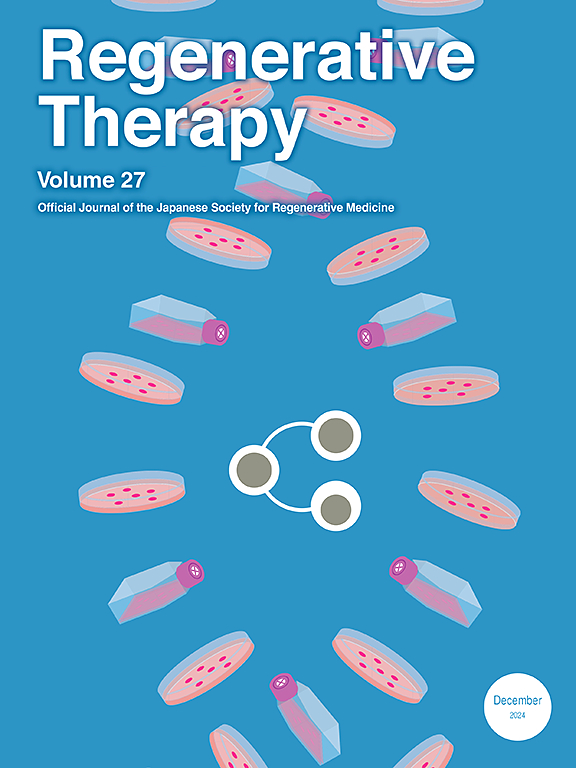ATMPs在再生医学中的当前挑战和未来方向
IF 3.5
3区 环境科学与生态学
Q3 CELL & TISSUE ENGINEERING
引用次数: 0
摘要
先进治疗药物产品(ATMPs)是一类突破性的药物,它利用生物为基础的产品来治疗或替代受损器官。它通过基因治疗、体细胞治疗、组织工程和联合治疗为复杂疾病提供了潜在的解决方案。尽管atmp对多种严重疾病有显著的改善作用,但其逐步发展面临着许多挑战。其中一些挑战是当前制造中的复杂性,例如扩大规模、扩大规模、产品功效、包装、存储、稳定性和物流问题。其他挑战包括atmp的生产、疗效和扩大规模,以及建立符合良好生产规范(GMP)的流程,该流程与根据良好实验室规范(GLP)进行的非临床研究得出的产品规格保持一致。此外,安全问题,如肿瘤发生是潜在的。监管和伦理问题,以及对标准化和明确临床指南的需要,也是关键障碍。为了应对这些挑战,人们正在探索诸如类器官、人工智能、动态培养系统和生物银行等新技术,为提高ATMP生产的一致性、可扩展性和精度提供了新的机会。人工智能(AI)技术的发展帮助科学家解决了监测问题、自动化和数据管理。引入先进的生物银行指南有助于研究人员克服储存和稳定性问题。通过为疾病、药物筛选和个性化医疗提供更准确的模型,类器官技术在克服与atmp临床前和建模相关的挑战方面具有重要的前景。本文回顾了目前在ATMP制造和应用方面面临的挑战,强调了为改进治疗策略铺平道路的技术进步,并提供了克服这些障碍的未来前景。本文章由计算机程序翻译,如有差异,请以英文原文为准。
Current challenges and future directions of ATMPs in regenerative medicine
Advanced therapy medicinal products (ATMPs) represent a groundbreaking category of medications that utilize biological-based products to treat or replace damaged organs. It offers potential solutions for complex diseases through gene therapy, somatic cell therapy, tissue engineering, and combined therapies. Although ATMPs have offered significant improvement for a variety of severe illnesses, their progressive development is faced with numerous challenges. Some of these challenges are current complexities in their manufacturing, such as scaling up, scaling out, product efficacy, packaging, storage, stability, and logistic concerns. Other challenges include manufacturing, efficacy, and scaling up of ATMPs, as well as establishing Good Manufacturing Practice (GMP)-compliant processes that align with product specifications derived from non-clinical studies conducted under Good Laboratory Practice (GLP). Additionally, safety concerns such as tumorigenesis are potential. Regulatory and ethical concerns, along with the need for standardization and clear clinical guidelines, are also critical obstacles. To address these challenges, novel technologies such as organoids, artificial intelligence, dynamic culture systems, and biobanking are being explored, providing new opportunities to enhance the consistency, scalability, and precision of ATMP production. Development in artificial intelligence (AI) technology helped scientists to address monitoring concerns, automation, and data management. Introducing advanced guidelines in biobanking helps researchers to overcome the storage and stability concerns. Organoid technology holds a significant promise in overcoming the challenges associated with preclinical and modeling of ATMPs by providing more accurate models for diseases, drug screening, and personalized medicine. This article reviews the current challenges in ATMP manufacturing and application, highlights the advancements in technology that are paving the way for improved therapeutic strategies, and offers future perspectives on overcoming these barriers.
求助全文
通过发布文献求助,成功后即可免费获取论文全文。
去求助
来源期刊

Regenerative Therapy
Engineering-Biomedical Engineering
CiteScore
6.00
自引率
2.30%
发文量
106
审稿时长
49 days
期刊介绍:
Regenerative Therapy is the official peer-reviewed online journal of the Japanese Society for Regenerative Medicine.
Regenerative Therapy is a multidisciplinary journal that publishes original articles and reviews of basic research, clinical translation, industrial development, and regulatory issues focusing on stem cell biology, tissue engineering, and regenerative medicine.
 求助内容:
求助内容: 应助结果提醒方式:
应助结果提醒方式:


